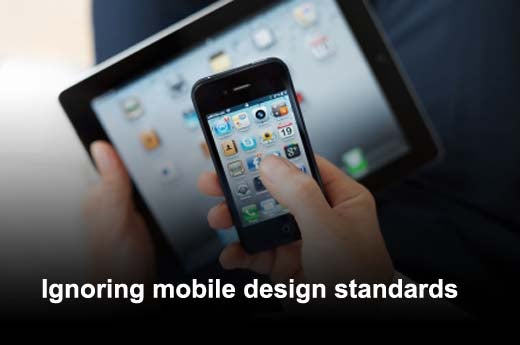Mobile business intelligence is poised to skyrocket in 2012 and beyond. With up to 80 percent of users expected to access BI exclusively on their mobile device within two years, mobile BI has become a critical part of many businesses’ IT strategy. As the desire for mobile BI grows, businesses are jumping rapidly into the pool — in some cases, without fully forming a long-term strategy or managing users’ expectations, which can lead to low adoption rates or ultimately project failure.
Businesses should avoid the following pitfalls as they dive into mobile BI deployments, according to global BI vendor arcplan.
Click through for five mobile BI pitfalls business should avoid, as identified by arcplan, a mobile BI vendor.
When users are introduced to mobile business intelligence, they may expect it to offer the feature richness they enjoy on their laptops or PCs. Unfortunately, mobile BI does not currently allow actions like “drag-and-drop,” so it will never be quite the same experience. To make up for this, mobile BI apps should leverage device-specific controls and gestures that allow for zooming in and out and should make use of large buttons and easy navigation to make the experience as user-friendly as possible. Preparing users to miss some features but embrace others is the way to ensure a smooth transition from desktop BI to mobile BI.
Mobile device screen resolution necessitates BI application redesign — not always a full-scale redesign of an existing BI app, but at the very least adjustments to font sizes, charts and buttons to accommodate a smaller screen size. In addition, an app for a smartphone will have different requirements than one for a tablet. While a 9-inch tablet can display an entire dashboard at once, a smartphone BI app should limit users to a list of reports that lead to individual charts. As mobile BI grows in popularity, we will undoubtedly see organizations design their dashboards and reports with mobile in mind, enabling even easier deployment.
In the interest of minimizing upfront expenses and the amount of support your IT organization will need to provide, consider who will benefit most from mobile BI before rolling it out. Those who do most of their work behind a desk — accounting managers, research analysts, etc. — are not good candidates. Executives who travel often, sales road warriors, and roving plant or store managers will get the most value from mobile BI because the tasks they’ll be using it for are quick (like reviewing a client’s purchases last year on the way to a meeting) and likely time-sensitive — ideal tasks for mobile BI.
Crossing your fingers is not going to solve your data security challenges when it comes to mobile BI. Your IT department will have real concerns about data being compromised if devices are lost, or third-parties accessing data once it is mobile-enabled. Some of the items that must be addressed in a detailed security plan prior to implementation include how devices will be secured, how data transmission will be secured and how users will be authorized and authenticated. Though much of this security preparation will need to be handled internally by your enterprise IT department, many mobile BI solutions utilize the same security infrastructure and permissions as your BI platform. Consider your many options for added security, like implementing a secure extranet or enabling remote content wipes on lost devices, and decide before you deploy.
Not every existing BI application at your company needs to be available on mobile. Consider how you use your smartphone or tablet PC in your personal life — you quickly consume blogs, exchange text messages and perform searches for bursts of information. Mobile BI works the same way. It should provide users a consumption-based model with limited analytical capabilities. A full-on analysis-based model works better on laptops and PCs, which have the speed and power for long, complicated analysis without giving users “mobile carpal tunnel.” Determine which dashboards and reports will provide value to users at-a-glance. Leave the ad-hoc analysis to desktop BI.








